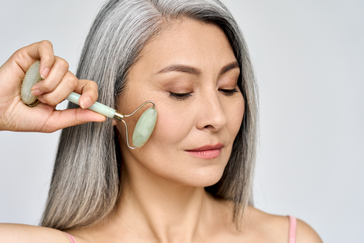Eat the Rainbow: Discover the Benefits of Red Fruits and Veggies
Posted by Mike Miryala on
Red is called lycopene and some food examples and key nutrients that are red are cranberries, berries, apples, beets, tomatoes and bell peppers just to name a few. So now, I’m going to say some of the key nutrients that are part of some of these foods. And then, Mike is going to talk a little bit more about how these are beneficial to our bodies and what it’s doing for us.
So, starting with berries, and a lot of these have overlapping nutrients. For berries, we think raspberries, strawberries, vitamin C is a huge one. Vitamin C is pretty recurring in all of these fruits and veggies. So Vitamin C is really potent in berries, apples, in beets and in bell peppers. So, you always know you’re getting a lot of Vitamin C here.
Vitamin C is also known as L-ascorbic acid, helping in growth and development of healthy body tissues and it’s also involved in many bodily functions. It especially works in improving immunity and also healing process of body tissues. Also, it helps in maintenance of the cartilage, bones and teeth. Essentially, it’s a healing vitamin. When you work out in a day, let’s say you’ve been working out and your calcium, these things need to be absorbed and your body tissue needs to be repaired. So, you have to constantly supplement with Vitamin C in order for your body to feel better and for your well-being. And apart from that, there are so many uses for it too.
Q: It’s very interesting, I thought Vitamin C is only for energy (getting a boost of energy), but I’m surprised that it helps in absorption as well?
Yes it is, also as pharmacists, we get asked questions like how much Vitamin C I need to take? So, essentially the vitamins, let’s say A and K are fat-soluble, and B and C are water-soluble. So in other words, you take 100,000 mg of Vitamin C in pill form, your body absorbs how much it needs for the day, and it flushes out with water. Vitamin B is also like that. When we are selling at the pharmacy, we get asked so many questions in terms of dosage, in terms of how it affects your body, how it interacts with other medications, all those things. But usually B C vitamins are freely available like that, it’s available in the food. You can also supplement with a capsule, tablets and other things. Especially, in the elderly it is used to build absorption of calcium to the bone and collagen. It has an effect everywhere in the metabolism.
Q: Are there any other vitamins and nutrients that you gain out of eating reds?
Yeah, there’s a lot more. Beyond Vitamin C, you can find fiber in basically all of these fruits and veggies. Fiber, Vitamin A as Mike mentioned before, iron is also common, and Vitamin K.
Q: So Sam, any recipes for reds?
Yeah, for reds if we want to do a salad, there’s so many salads you can do. But if you want to integrate beets because beets are really good for you, if you are looking to reduce blood clotting, just like increase your blood flow, which most of us need to do. You can do a spinach walnut beet salad which you’re getting a really strong superfood green - spinach - which is really high in iron. And then walnuts are really really healthy fats and they stimulate the brain, really good for your brain. Also, fun fact, if you look at any nuts that kind of look like your brain, like a walnut or cashew, that means they’re good for your brain. And then beets as we’ve said helps with a variety of health benefits. So that’s one salad, and you can also sprinkle feta cheese on top. And I like to say feta cheese over other cheeses because feta cheese is easier on the body to digest, it is out of all the cheeses you can eat, a healthier cheese and it tastes great. So that’s one option for having a salad with beets.
For bell peppers, you can have like a fajita, a Mexican fajita bowl. So you can have chicken, black beans and you can have quinoa as a healthier complex carb which also has a lot of fiber. And then you can have a little bit of cheese there, you’re using healthy olive oil and seasoning it with amazing spices that all have different antioxidant benefits. So there’s two options there. You can also throw in some guac so that you get your avocado - another really healthy fat.
If you missed Samantha's and Mike's discussion on Eat The Rainbow, you can still watch the full episode here (part 1) --> https://www.facebook.com/cobionic/videos/eat-the-rainbow-live-session-with-experts/2275879252597361





